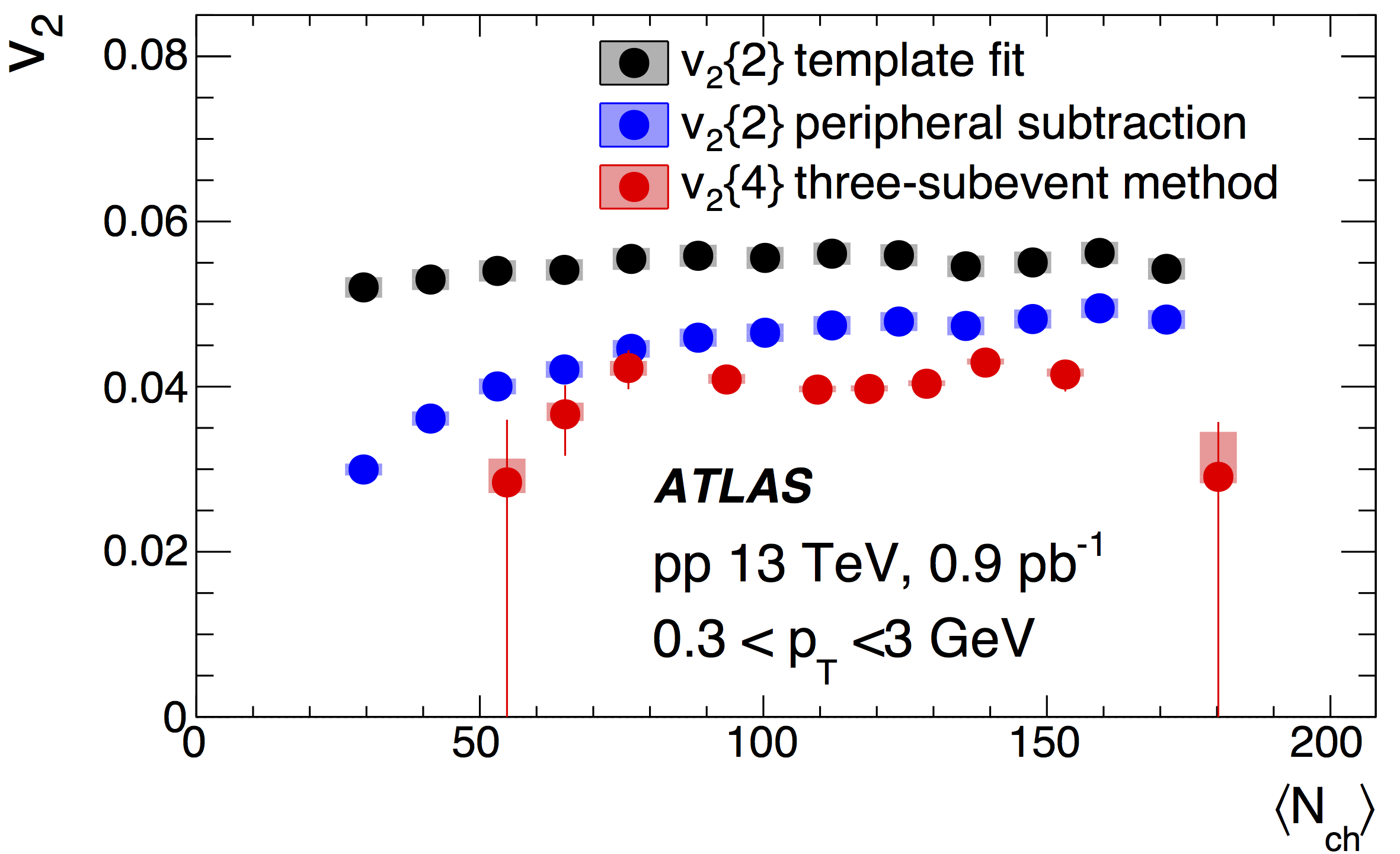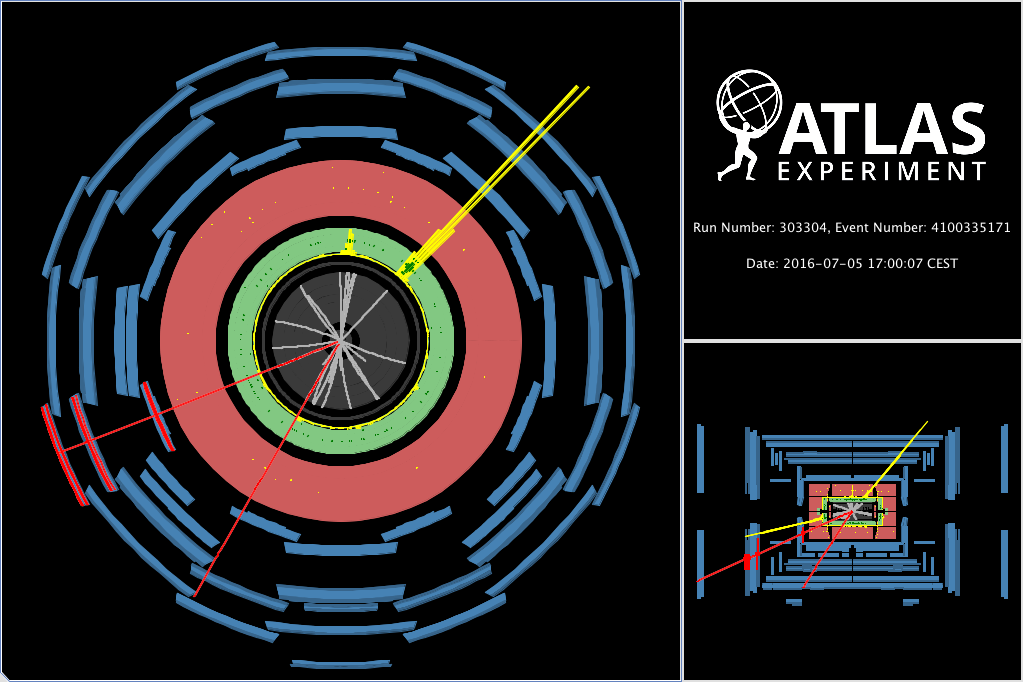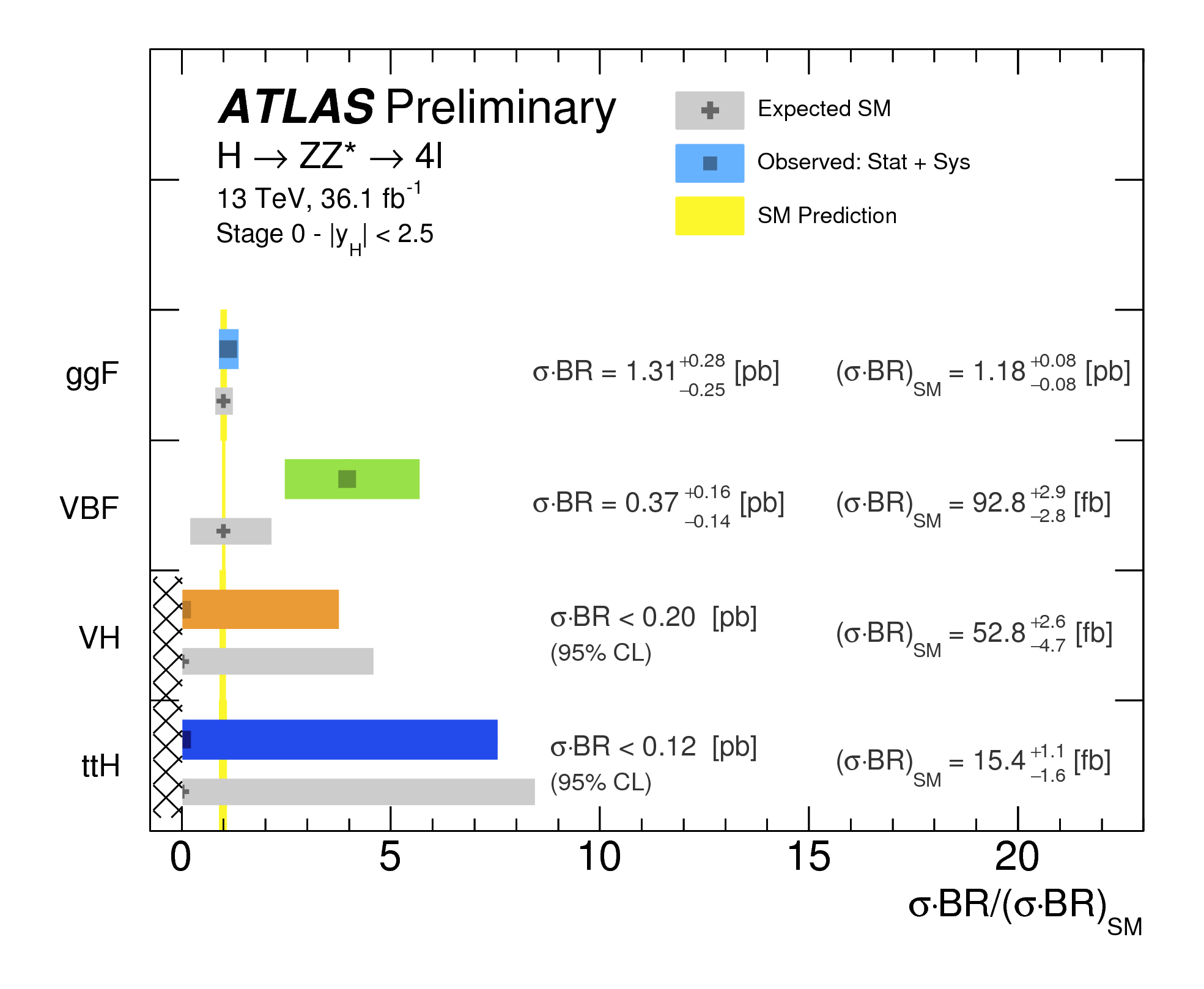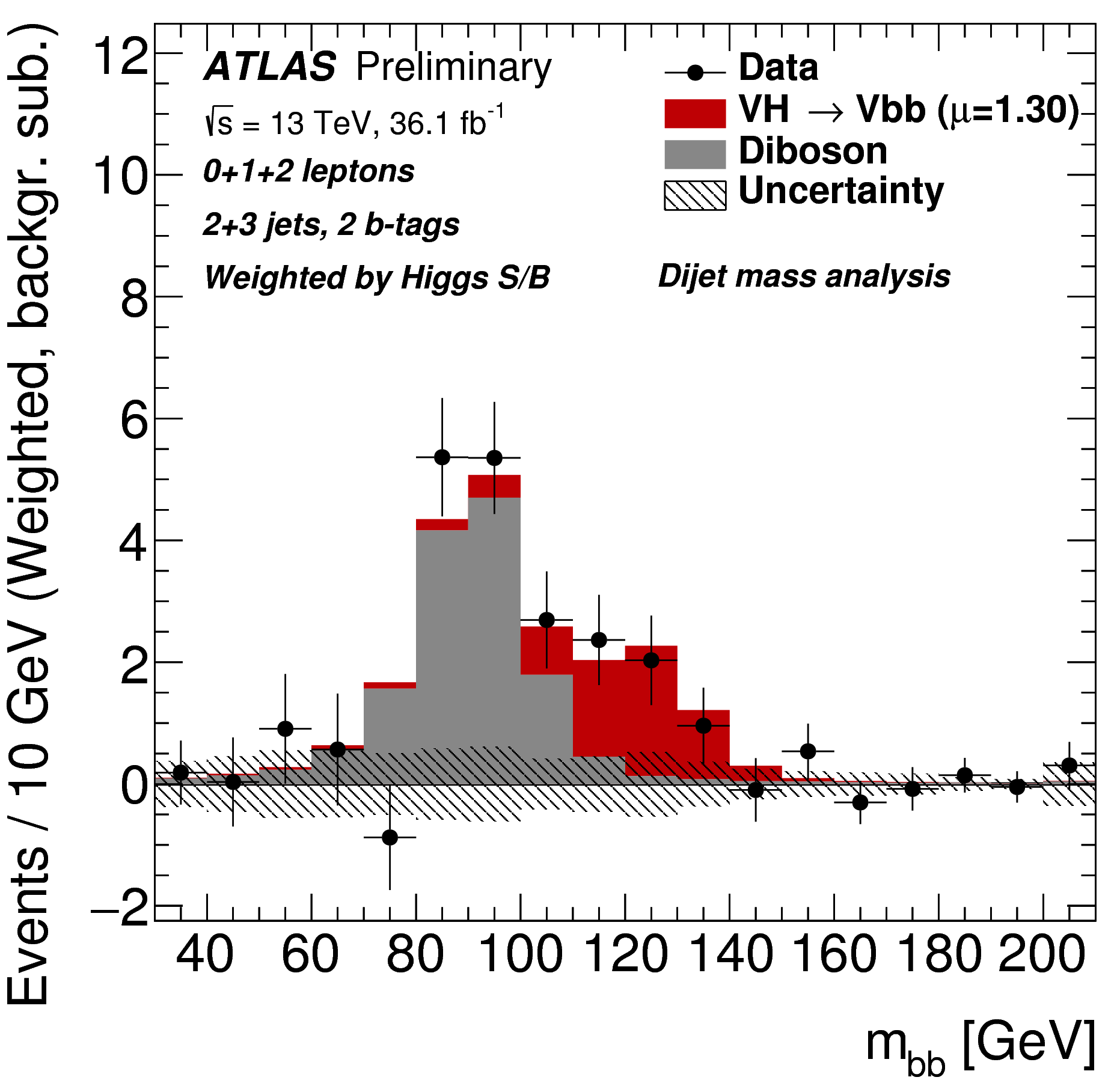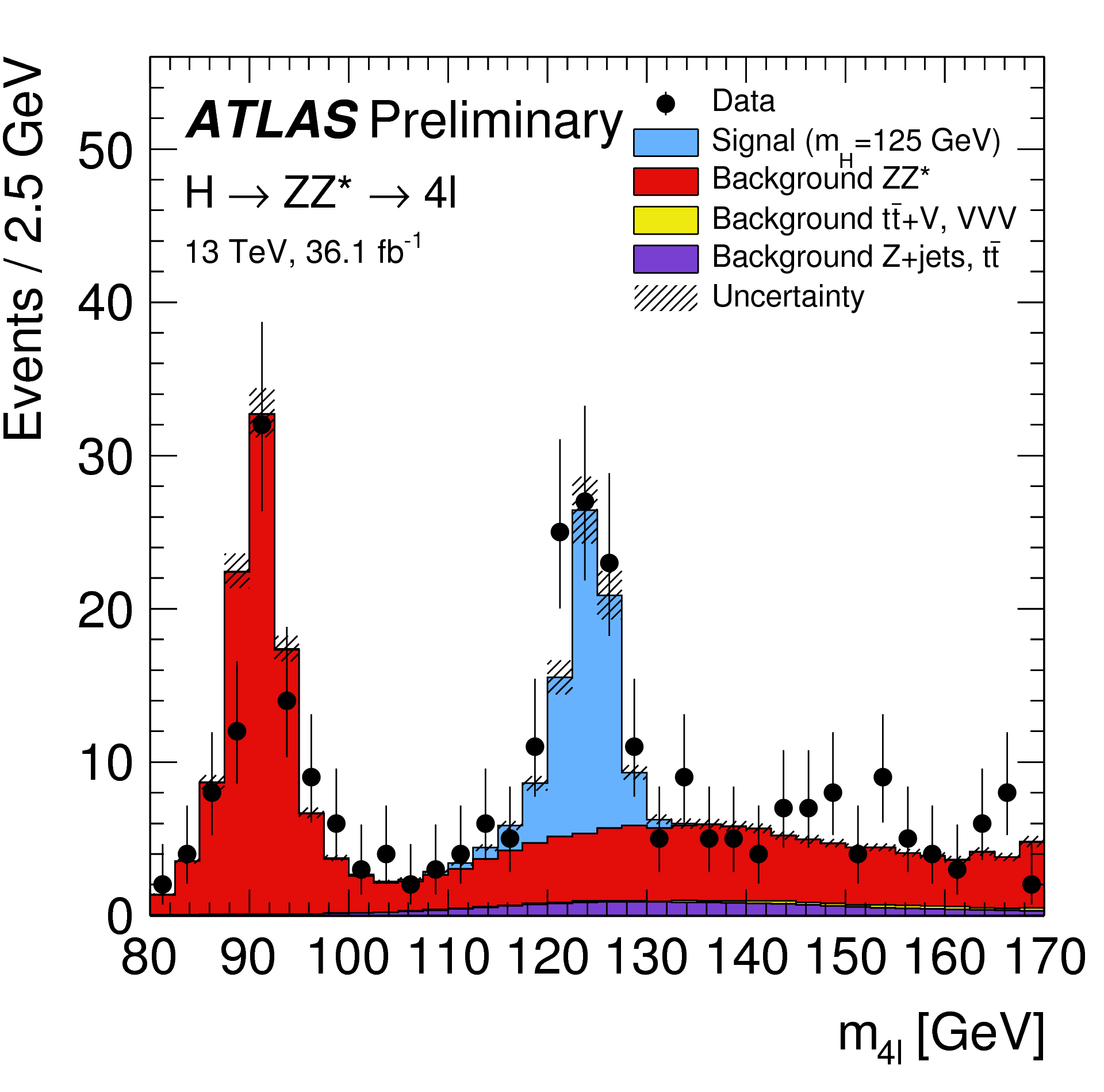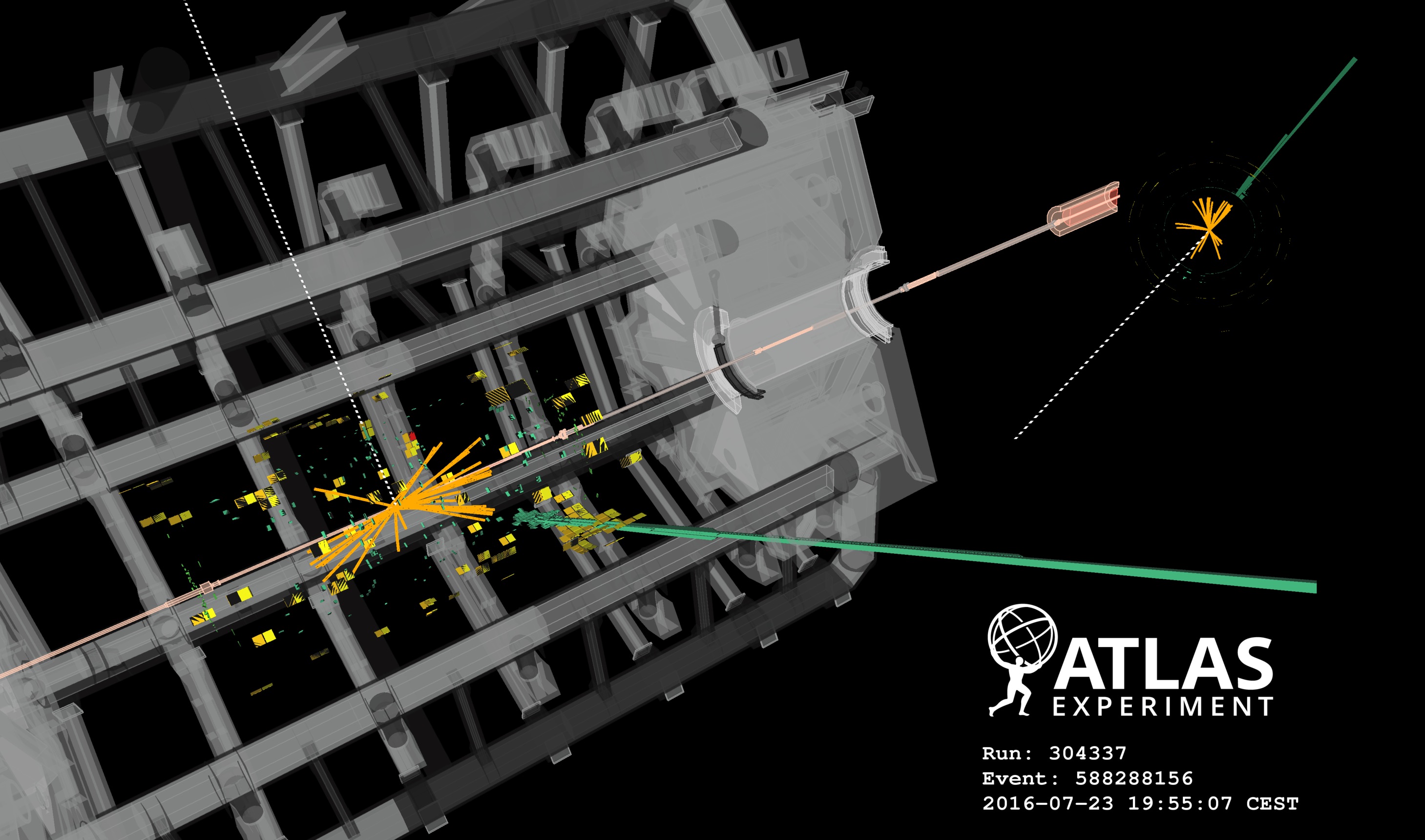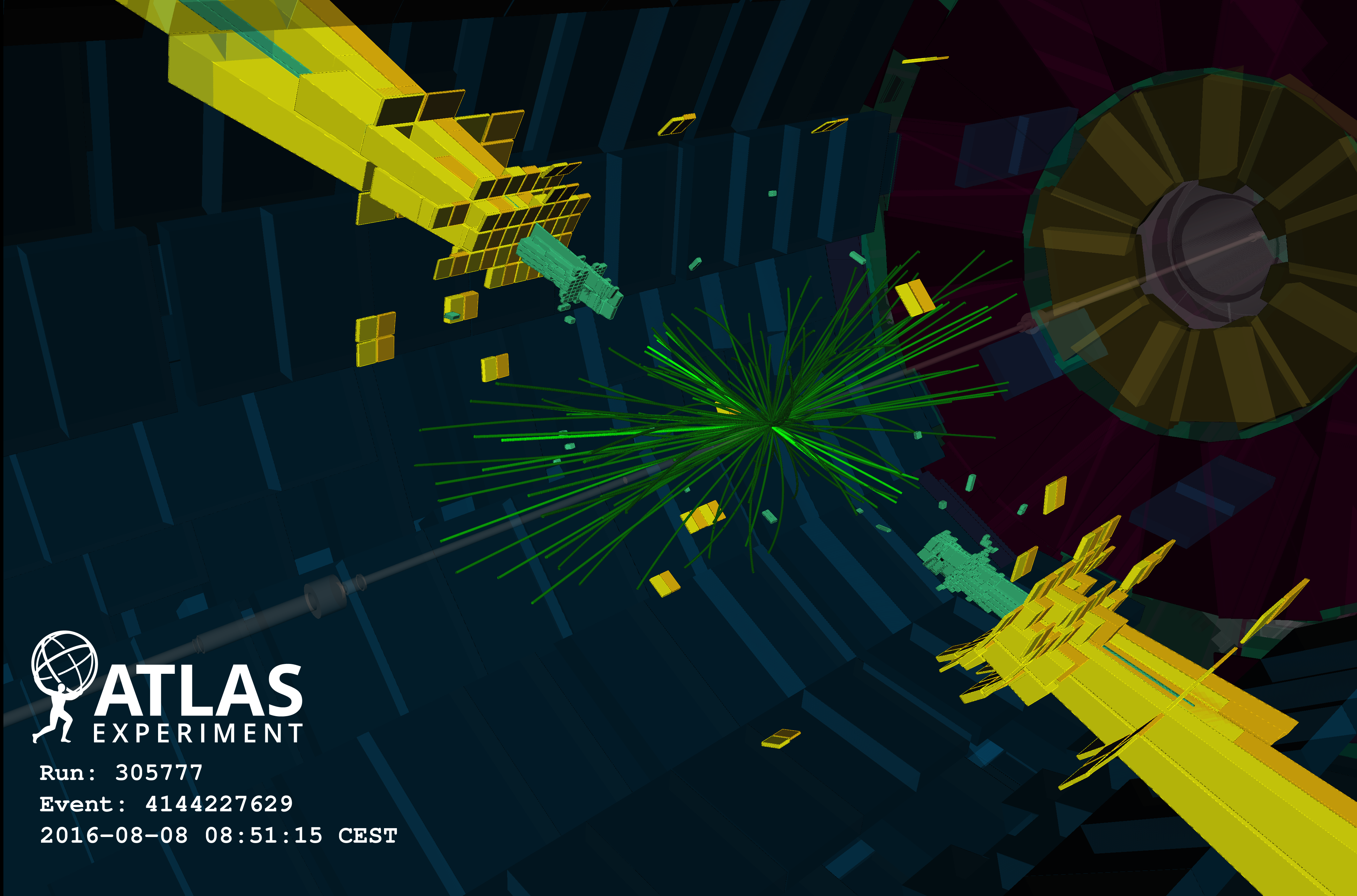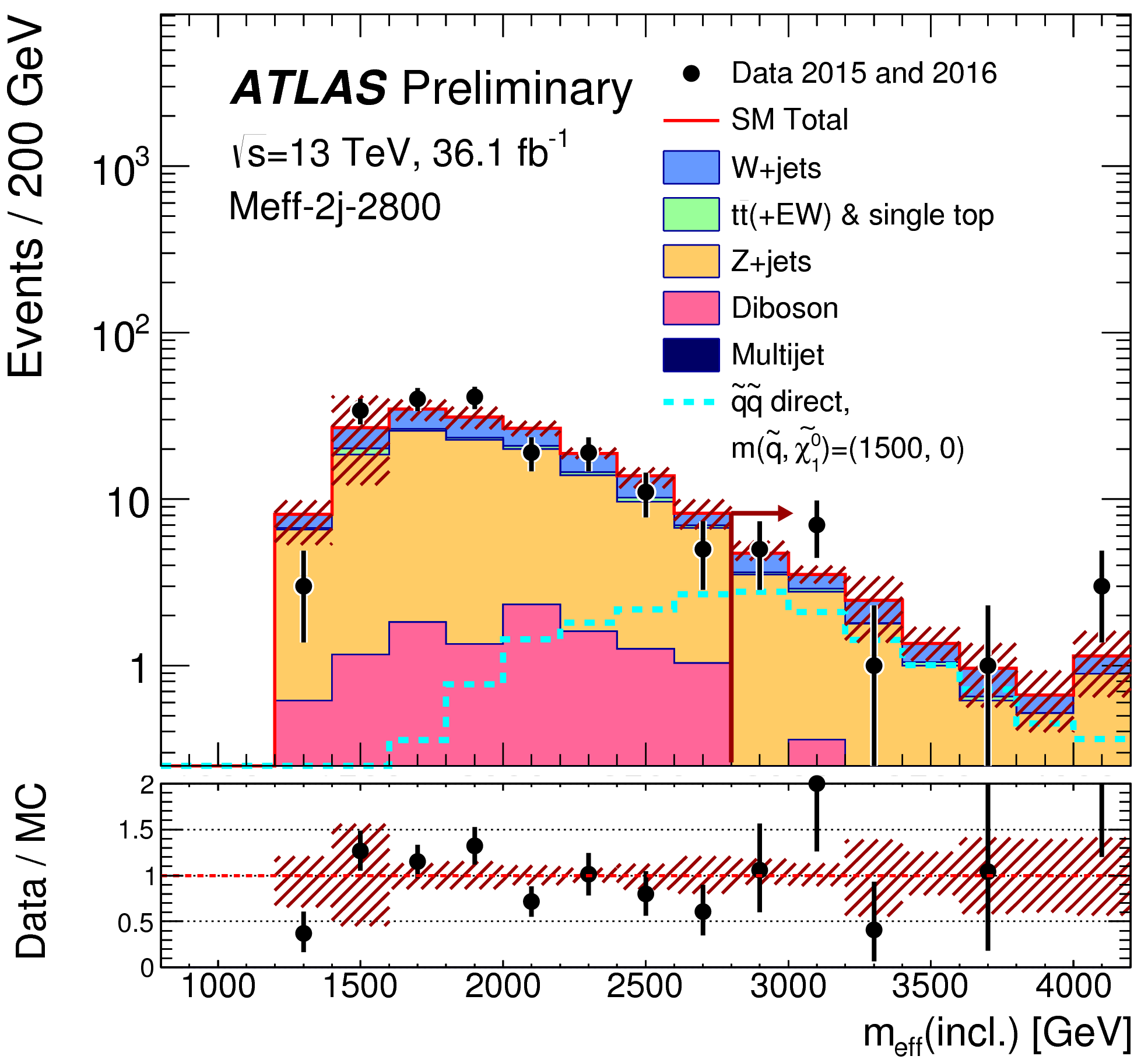Briefings
Finding a haystack in a field of haystacks
In order to produce rare physics phenomena, such as the Higgs boson or possible signs of new physics, the Large Hadron Collider (LHC) collides tens of millions of protons per second. Under such conditions, around 20 simultaneous proton-proton interactions occur in each beam crossing. Thus, additional collisions called “pile-up” are recorded along with the collision of interest. Together, they form a single event for analysis.
Exploring the nature of the “ridge” in small systems
When ultra-relativistic heavy ions collide, a new state of hot and dense matter – the quark–gluon plasma (QGP) – is created. One of the key features for this state is the observation of long-range azimuthal angle correlations between particles emitted over a wide range of pseudorapidity. This phenomenon is often referred to as the “ridge”.
Exploring rare decays of the Higgs boson
Since discovering a Higgs boson in 2012, the ATLAS and CMS collaborations have been trying to understand whether this new particle is the Higgs boson as predicted by the Standard Model, or a Higgs boson from a more exotic model containing new, as yet undiscovered, particles. The answer lies in the properties of the Higgs boson.
5 fundamental parameters from top quark decay
For many physicists, discovering “new physics” means bringing to light a new particle. Another path to discovery lies in carefully measuring the properties of known particles and the interactions between them. The ATLAS experiment has now released new results on the top quark's interaction with the charged intermediate vector boson.
The invisible plan
As the Large Hadron Collider (LHC) smashes together protons at a centre-of-mass energy of 13 TeV, it creates a rich assortment of particles that are identified through the signature of their interactions with the ATLAS detector. But what if there are particles being produced that travel through ATLAS without interacting? These “invisible particles” may provide the answers to some of the greatest mysteries in physics.
Probing physics beyond the Standard Model with heavy vector bosons
Although the discovery of the Higgs boson by the ATLAS and CMS Collaborations in 2012 completed the Standard Model, many mysteries remain unexplained. For instance, why is the mass of the Higgs boson so much lighter than one would expect and why is gravity so weak?
New rare pairs of heavy friends in ATLAS
Observing rare productions of heavy elementary particles can provide fresh insight into the Standard Model of particle physics. In a new result, the ATLAS Experiment presents strong evidence for the production of a single top-quark in association with a Z boson.
Why should there be only one? Searching for additional Higgs Bosons beyond the Standard Model
Since the discovery of the elusive Higgs boson in 2012, researchers have been looking beyond the Standard Model to answer many outstanding questions. An attractive extension to the Standard Model is Supersymmetry (SUSY), which introduces a plethora of new particles, some of which may be candidates for Dark Matter.
New ATLAS measurement of the Higgs Boson mass
The ATLAS collaboration has released a new preliminary measurement of the Higgs boson mass using 2015 and 2016 LHC data. The number of recorded Higgs boson events has more than tripled since the first measurement of the Higgs boson was released, using 2011/2012 data. An improved precision in the measurement of the Higgs boson mass has been made possible by both the increased collision energy of 13 TeV and improved collision rate.
ATLAS takes a closer look at the Higgs boson’s couplings to other bosons
Since resuming operation for Run 2, the LHC has been producing about 20,000 Higgs bosons per day in its 13 TeV proton–proton collisions. At the end of 2015, the data collected by the ATLAS and CMS collaborations were already enough to re-observe the Higgs boson at the new collision energy. Now, having recorded more than 36,000 trillion collisions between 2015 and 2016, ATLAS can perform ever more precise measurements of the properties of the Higgs boson
Chasing the invisible
Cosmological and astrophysical observations based on gravitational interactions indicate that the matter described by the Standard Model of particle physics constitutes only a small fraction of the entire known Universe. These observations infer the existence of Dark Matter, which, if of particle nature, would have to be beyond the Standard Model.
A first LHC sighting of the Higgs boson in its favourite decay
Until now, the Higgs boson had been observed decaying to photons, tau leptons, and W and Z bosons. However, these impressive achievements represent only 30% of the Higgs boson decays! The Higgs boson’s favoured decay to a pair of b-quarks, which was predicted to happen around 58% of the time and thus drives the short lifetime of the Higgs boson, had so far remained elusive. Observing this decay would fill in one of the big missing pieces of our knowledge of the Higgs sector. It would confirm that the Higgs mechanism is responsible for the masses of quarks and might also provide hints of new physics beyond our current theories. All in all, it is a vital missing piece of the Higgs boson puzzle!
More than the sum of its parts: inside the proton
Discovered almost 100 years ago by Ernest Rutherford, the proton was one of the first particles to be studied in depth. Yet there’s still much about it that remains a mystery. Where does its mass and spin come from? What is it made of? To answer these questions, ATLAS physicists are using “jets” of particles emitted by the LHC as a magnifying glass to examine the inner structure of the proton.
ATLAS releases new results in search for weakly-interacting supersymmetric particles
Supersymmetry is an extension to the Standard Model that may explain the origin of dark matter and pave the way to a grand unified theory of nature. For each particle of the Standard Model, supersymmetry introduces an exotic new “super-partner,” which may be produced in proton-proton collisions. Searching for these particles is currently one of the top priorities of the LHC physics program. A discovery would transform our understanding of the building blocks of matter and the fundamental forces, leading to a paradigm shift in physics similar to when Einstein’s relativity superseded classical Newtonian physics in the early 20th century.
Hunting for the superpartner of the top quark
Supersymmetry (SUSY) is one of the most attractive theories extending the Standard Model of particle physics. SUSY would provide a solution to several of the Standard Model’s unanswered questions, by more than doubling the number of elementary particles, giving each fermion a bosonic partner and vice versa. In many SUSY models the lightest supersymmetric particle (LSP) constitutes dark matter.
New ATLAS precision measurements of the Higgs Boson in the 'golden channel'
With the huge amount of proton–proton collisions delivered by the LHC in 2015 and 2016 at the increased collision energy of 13 TeV, ATLAS has entered a new era of Higgs boson property measurements. The new data allowed ATLAS to perform measurements of inclusive and differential cross sections using the “golden” H->ZZ*->4l decay.
New insight into the Standard Model
Ever since the LHC collided its first protons in 2009, the ATLAS Collaboration has been persistently studying their interactions with increasing precision. To this day, it has always observed them to be as expected by the Standard Model. Though it remains unrefuted, physicists are convinced that a better theory must exist to explain certain fundamental questions: What is the nature of the dark matter? Why is the gravitational force so weak compared to the other forces?
Making the most of the ATLAS detector
Up to now, ATLAS has measured the energies and positions of jets using the finely segmented calorimeter system, in which both electrically charged and neutral particles interact. However, the inner detector tracking system provides more precise measurements of charged particle energies and positions. A recent ATLAS paper describes a particle flow algorithm that extrapolates the charged tracks seen by the inner detector to the calorimeter regions.
Charged-particle reconstruction at the energy frontier
A new age of exploration dawned at the start of Run 2 of the Large Hadron Collider, as protons began colliding at the unprecedented centre-of-mass energy of 13 TeV. The ATLAS experiment now frequently observes highly collimated bundles of particles (known as jets) with energies of up to multiple TeV, as well as tau-leptons and b-hadrons that pass through the innermost detector layers before decaying. These energetic collisions are prime hunting grounds for signs of new physics, including massive, hypothetical new particles that would decay to much lighter – and therefore highly boosted – bosons.
Searching for new symmetries of nature
The fundamental forces of nature are intimately related to corresponding symmetries. For example, the properties of electromagnetic interactions (or force) can be derived by requiring the theory that describes it to remain unchanged (or invariant) under a certain localised transformation. Such an invariance is referred to as a symmetry, just as one would refer to an object as being symmetric if it looks the same after being rotated or reflected. The particular symmetry related to the forces acting among particles is called gauge symmetry.
Improving our understanding of photon pairs
High-energy photon pairs at the LHC are famous for two things. First, as a clean decay channel of the Higgs boson. Second, for triggering some lively discussions in the scientific community in late 2015, when a modest excess above Standard Model predictions was observed by the ATLAS and CMS collaborations.
Quest for the lost arc
Nature has surprised physicists many times in history and certainly will do so again. Therefore, physicists have to keep an open mind when searching for phenomena beyond the Standard Model.
Particle-hunting at the energy frontier
There are many mysteries the Standard Model of particle physics cannot answer. Why is there an imbalance between matter and anti-matter in our Universe? What is the nature of dark matter or dark energy? And many more. The existence of physics beyond the Standard Model can solve some of these fundamental questions. By studying the head-on collisions of protons at a centre-of-mass energy of 13 TeV provided by the LHC, the ATLAS Collaboration is on the hunt for signs of new physics.
Searching for signs of the “stop”
In new results presented at the Moriond Electroweak conference, the ATLAS Collaboration has sifted through the full available data sample of the LHC’s 13 TeV proton collisions in search of a specific SUSY particle: the heavy partner to the top quark, called the “top squark” or “stop”
The search for super-particles continues!
Many of the most important unanswered questions in fundamental physics are related to mass. Why do elementary particles, which we have observed and measured at CERN and other laboratories, have the masses they do? And why are they so different, with the mass of the top quark more than three hundred thousand times that of the electron? The presence of dark matter in our universe is inferred because of its mass but, if it is a particle, what is it? While the Standard Model has been a tremendously successful theory in describing the interactions of sub-atomic particles, we must look to even larger masses in search of answers and, potentially, new supersymmetric particles


